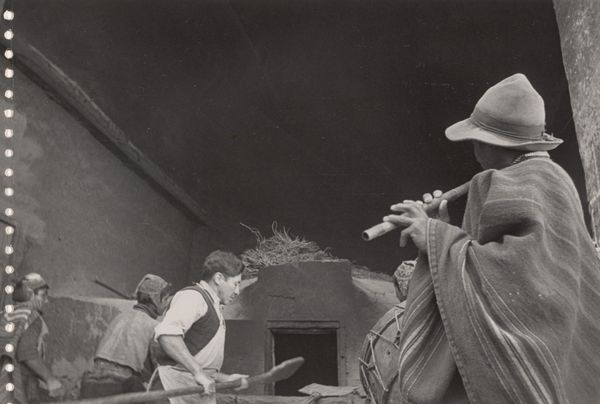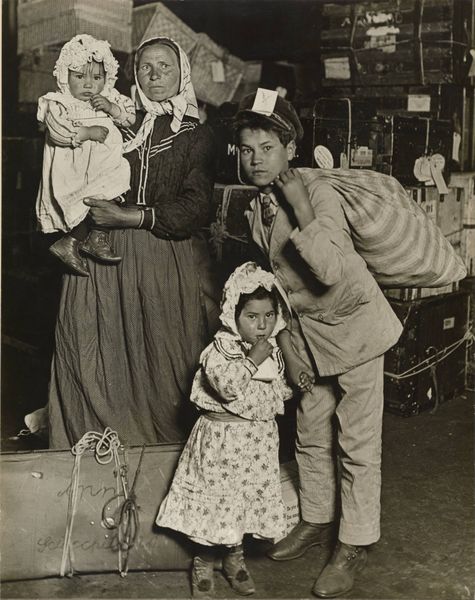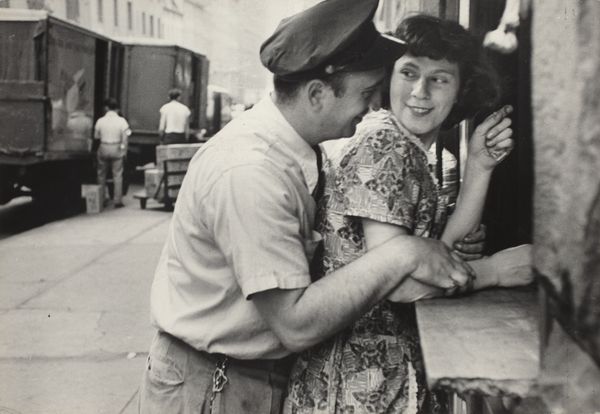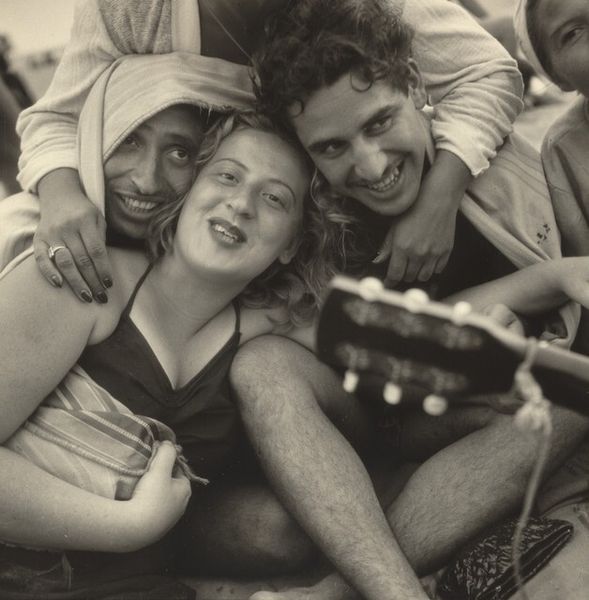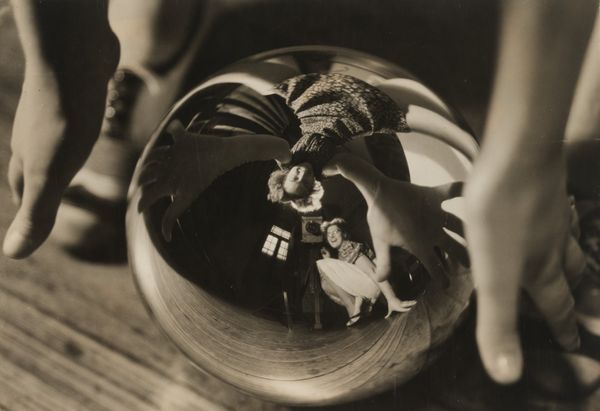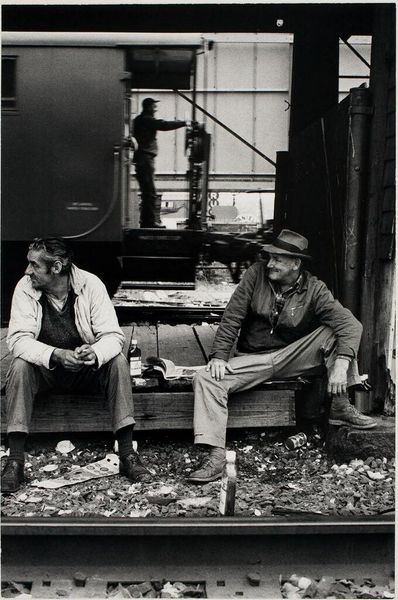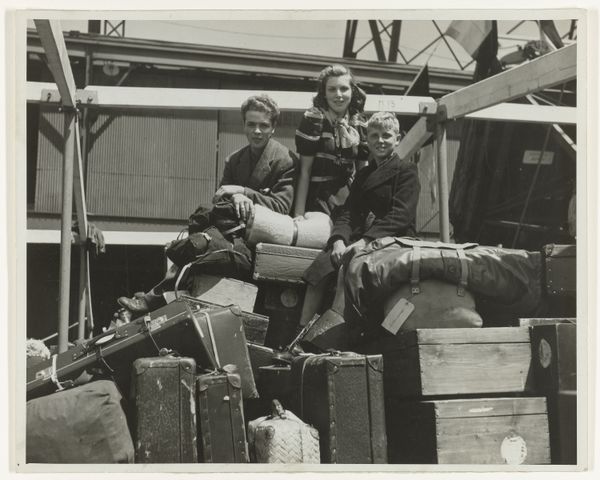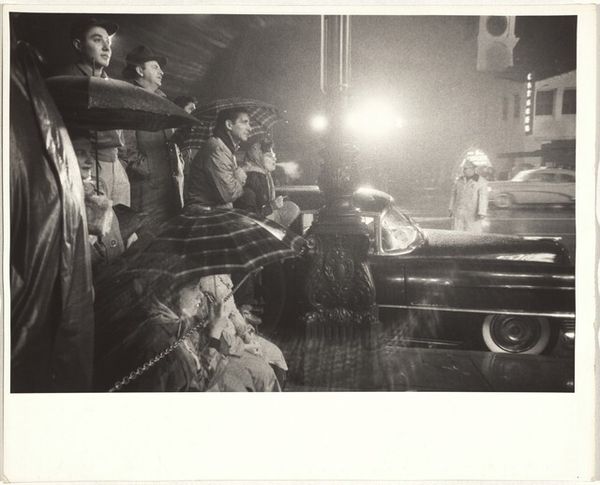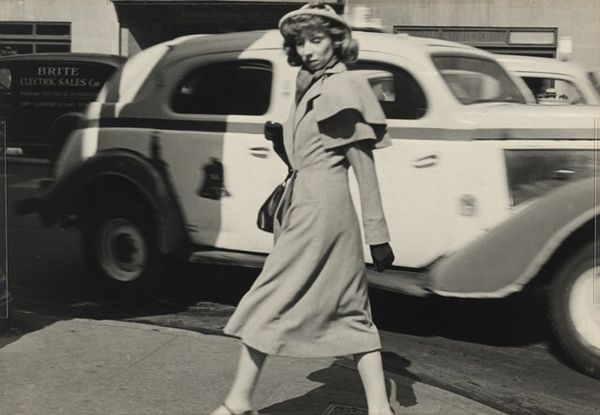
After lunch Connie jokes with other workers outside the factory. 1951
0:00
0:00
photography, gelatin-silver-print
#
black and white photography
#
street-photography
#
photography
#
black and white
#
gelatin-silver-print
#
monochrome photography
#
genre-painting
#
realism
Dimensions: sheet (trimmed to image): 24.2 x 34.1 cm (9 1/2 x 13 7/16 in.)
Copyright: National Gallery of Art: CC0 1.0
Editor: This is Robert Frank’s “After lunch Connie jokes with other workers outside the factory,” taken in 1951, a gelatin silver print. It's such an intimate snapshot of everyday life, but there is some structural awkwardness to it. How do you interpret this work from a formal perspective? Curator: The success of Frank’s image arises from its ability to marry technical imperfection with potent composition. The high contrast enhances the geometric relationships within the frame. The figures are carefully positioned. Note the repeating vertical thrusts of the pipes in the background playing against the implied diagonal of the seated workers. Consider also how Frank uses the barrel in the background as a grounding point. What is your impression of the use of light? Editor: The lighting is definitely harsh, creating deep shadows, which lends a kind of immediacy, almost a raw feeling to the image, drawing attention to the contrasts. Curator: Precisely. Observe how Frank allows the interplay between shadow and light to sculpt the subjects, highlighting their gestures and expressions. Look carefully at Connie’s expression captured with striking candor. Editor: So you are saying that this work succeeds less in its realistic portrayal of factory life, and more in its masterful construction of geometric forms and carefully calibrated tonal relationships? Curator: Indeed. Though the narrative content provides a contextual anchor, the formal elements are where Frank's genius shines most brightly, using those very tensions you observed as expressive strengths. He challenges the viewer through formal disquiet. What do you make of the grain? Editor: Initially, I viewed it as a byproduct of the available technology of the era, but it adds another layer to the emotional tone. Thank you, that gave me a different lens through which to examine the image. Curator: Absolutely. Considering formal choices such as grain elevates the viewing experience from passive consumption to active critical inquiry.
Comments
No comments
Be the first to comment and join the conversation on the ultimate creative platform.
